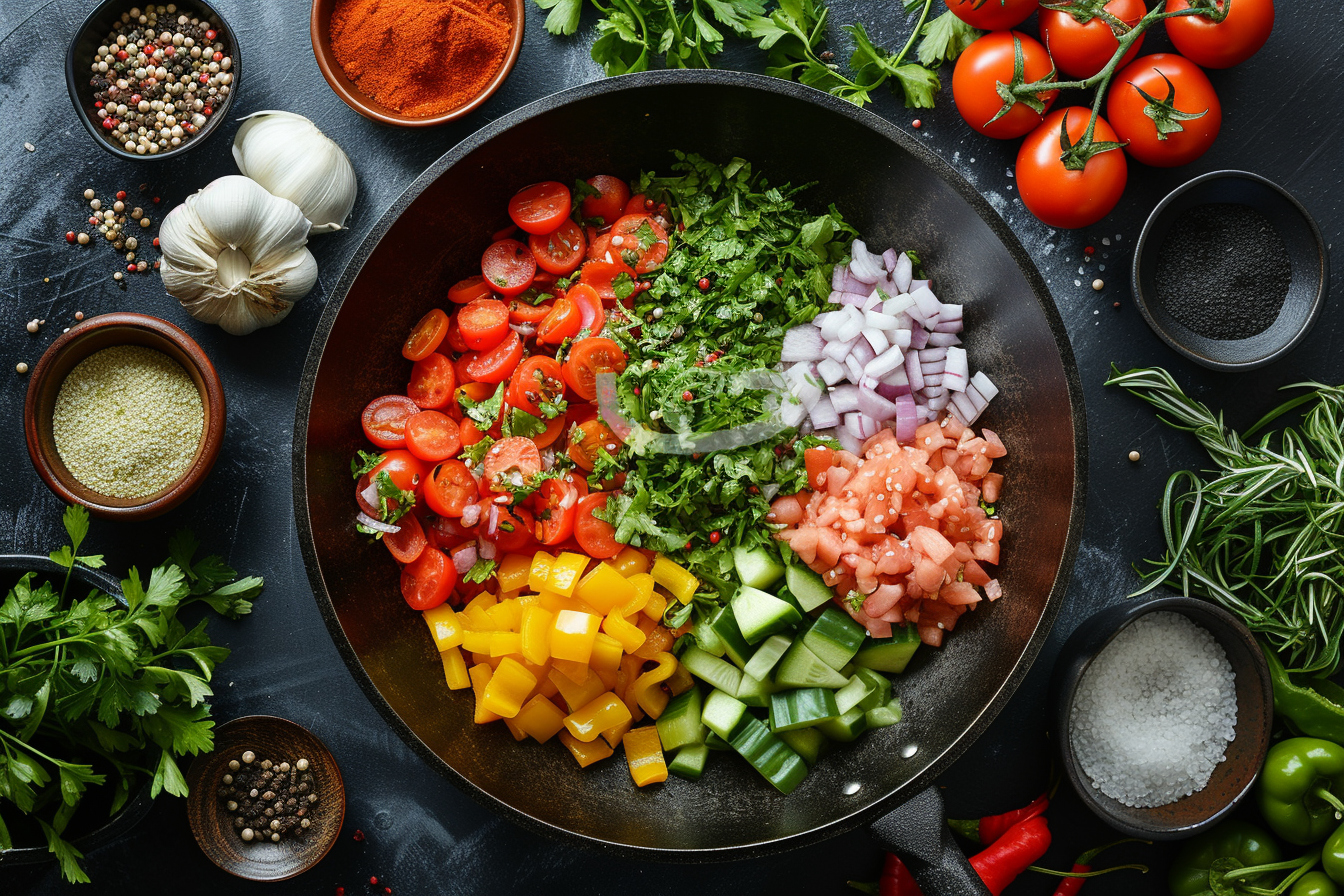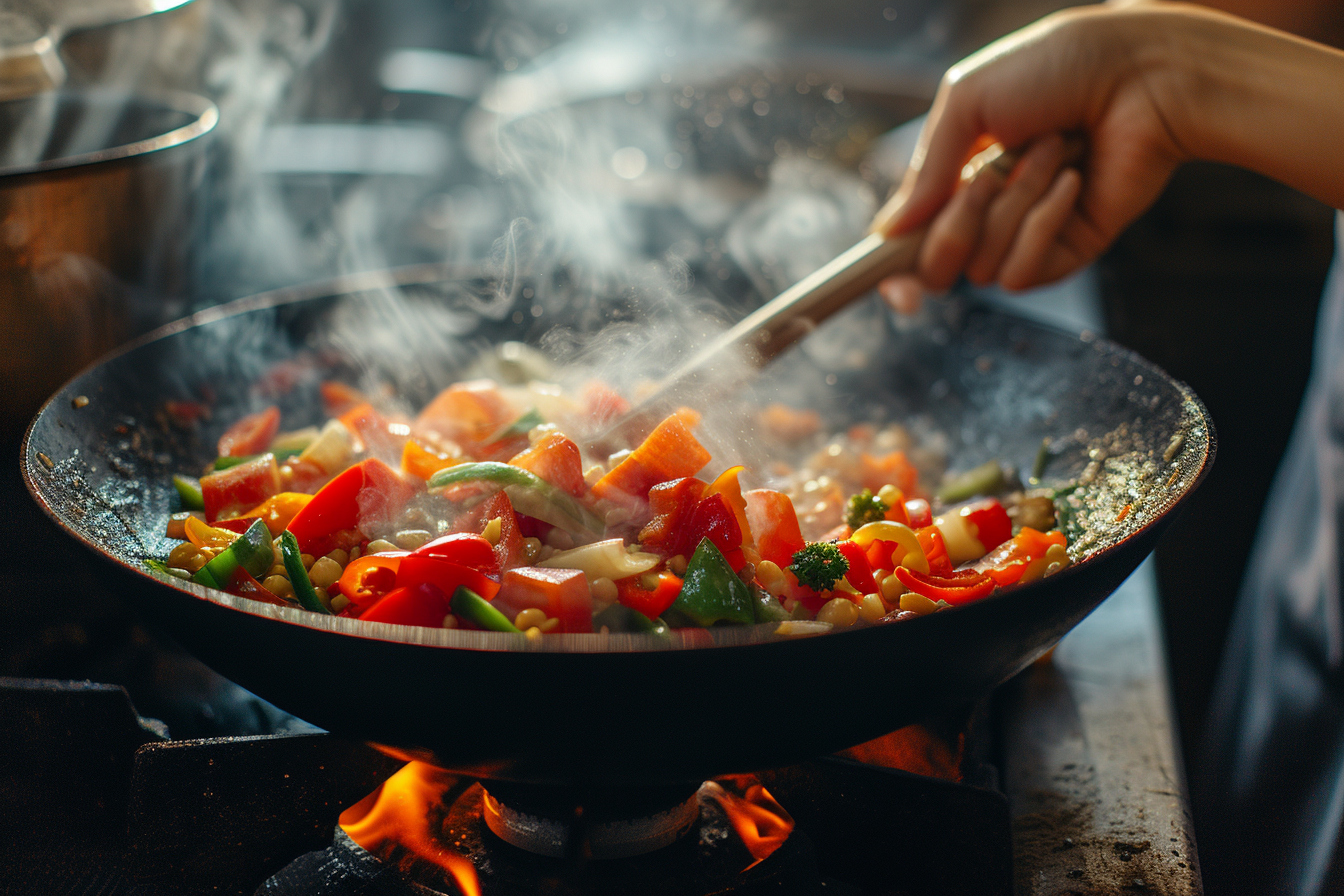Cooking with a wok is an age-old culinary art that stems from Asia and has transcended international borders, becoming a beloved technique for preparing vibrant, flavorful, and healthy dishes. The wok’s unique shape and the techniques it accommodates are intrinsically designed to impart a distinctive essence known as "wok hei" – the breath of the wok. To master the art of wok cooking, one must familiarize themselves with the array of methods that can transform simple ingredients into extraordinary meals.
The importance of a seasoned wok
A well-seasoned wok is the cornerstone of authentic wok cooking. This process involves coating the interior of the wok with a layer of oil and heating it to create a non-stick surface that also imparts depth of flavor to the dishes prepared in it. Regular use and proper seasoning contribute to the wok’s ability to sear foods quickly while preserving their crisp textures and fresh tastes.
Preparing for the stir-fry
Preparation is paramount in stir-frying due to the rapid cooking process. Ingredients should be cut uniformly to ensure even cooking. Proteins may require marinating to enhance their flavor and tenderize them. Vegetables should be washed, dried, and chopped before heating the wok. Once the cooking begins, there is little time for preparation, so organize the ingredients beforehand to add them quickly and effortlessly.
Mise en place is not just a cooking term but a philosophy in wok cooking — the practice of having all ingredients cut, measured, and arrayed before the stove is lit. Adhering to this philosophy is critical for achieving the perfect texture and taste in stir-fried dishes.
High heat: the key to succulent stir-fries
The essence of wok cooking lies in the ability to cook swiftly at high temperatures. Home cooks should use the highest heat their stove can provide to create that authentic sear that is characteristic of stir-fry dishes. Be aware, however, that different stovetops produce varying levels of heat, and adjustments in cooking time may be necessary.
The art of tossing and turning
Frequent stirring and tossing are hallmarks of wok cooking. These motions ensure that food cooks evenly, preventing overcooking while also keeping ingredients in constant motion to achieve that coveted wok hei. A wok spatula, with its curved edge that perfectly fits the wok’s contour, is an indispensable tool for the home chef aiming to adopt authentic techniques.
Layering flavors

To fully exploit the capabilities of the wok, introduce ingredients to the wok based on their cooking times. Start with items that take the longest to cook, such as carrots or onions, before adding quicker-cooking vegetables, like bell peppers or spinach. Sauces typically enter the fray towards the end of the cooking process to avoid burning. The layering of flavors builds complexity, merging the individual characteristics of each ingredient into a coherent whole.
Understanding oil smoke points
Selecting the right oil can greatly impact the flavor and quality of the stir-fry. Oils with high smoke points are best for wok cooking. Peanut, canola, and grapeseed oil are all excellent choices that can withstand high temperatures without burning, thus protecting the integrity of both the wok’s seasoning and the dish’s flavor profile.
Taming the flame
While high heat is essential, there are moments when controlling the heat can make a significant difference. For dishes requiring longer cooking times, or when adding sauces that could burn at high temperatures, it is beneficial to reduce the heat temporarily. When wok cooking, staying actively engaged and regulating heat as needed ensures that stir-fries are cooked to perfection.
The technique of ‘velveting’
Velveting is a Chinese cooking technique that involves marinating and then pre-cooking proteins in hot water or oil before stir-frying. This method seals in juices and creates a tender, silky texture. It is a game-changer for home cooks looking to mimic the tender meats found in restaurant-quality stir-fries.
Exploring beyond stir-frying
Although the wok is synonymous with stir-frying, it is an astonishingly versatile cooking vessel. Techniques such as steaming, deep-frying, and even smoking can be performed effectively in a wok due to its shape and conductive properties.
- Steaming in a wok requires a simple bamboo steamer or a rack to hold the food above simmering water. The wok’s form allows for an efficient diffusion of steam, making it perfect for dim sum, vegetables, and fish.
- Deep-frying is another technique where the wok’s wide opening and deep center is advantageous, requiring less oil than a traditional deep fryer and ensuring even heating.
- Smoking with a wok involves placing tea, sugar, and flour at the base of the wok, then placing the food on a rack above the smoldering mixture. The wok’s lid traps the smoke, infusing the food with a delicate, smoky flavor.
The fluidity of wok cooking
A beautiful aspect of wok cooking is its fluidity. There is a rhythm to adding ingredients, stirring, flipping, and adjusting heat — each movement contributes to the dance of wok cooking. As cooks become more accustomed to the methods, they often begin to improvise, adding their touch of creativity to the dishes they prepare. Understanding the basics provides the freedom to experiment with flavors, textures, and ingredients.
Balancing textures
Textural contrast is a crucial element in stir-fry dishes. The combination of crunchy vegetables, soft proteins, and chewy noodles or rice creates an engaging sensory experience. Mastering the timing of adding these components is critical for achieving the desired outcome. Stir-frying is not just about mixing ingredients; it is about harmonizing their textures.
Diving into the multifaceted world of wok cooking is an exhilarating journey for any culinary enthusiast. It is a journey of discovery, where each meal is a canvas, and the wok is your brush. The techniques delineated above serve not as strict rules but as a foundation upon which to build and hone one’s skills. Mastery of wok cooking requires practice, patience, and a willingness to learn from each stir, each flip, each meticulous preparation of ingredients.
By embracing these methods and infusing them with your culinary voice, the road to wok wizardry becomes less daunting and more attainable. Each dish is an opportunity to refine your stir-fry skills and to elevate your cooking repertoire to new heights. With the wok as your trusty tool, there is no limit to the extraordinary meals you can create. Unleash the power of your wok and watch as your cooking evolves, one sizzling stir-fry at a time.

Leave a Reply